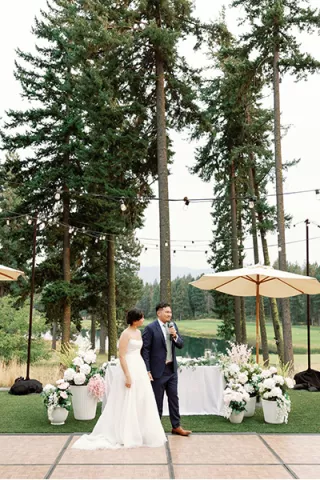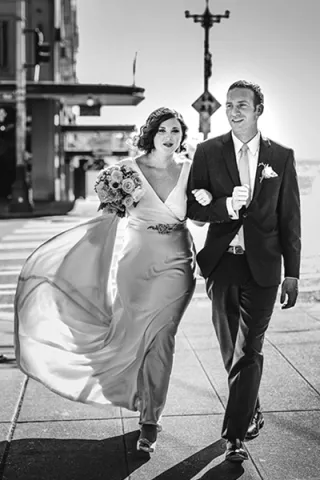(Above) Popular venues like The Foundry are often less expensive to book on Fridays.
EXPERIENCE AND TIMING MATTER
“Do your research to make sure you are hiring an experienced planner who is well known in the industry,” says longtime planner Wendy Wojcik of Weddings with Wendy. “Hiring a wedding planner sounds like it will increase your budget; however, many wedding coordinators receive preferred pricing or extra services from the vendors that help defray the cost of planning.” Having your wedding in the off-season also drastically reduces the cost, but if you are set on having a wedding during peak season, which is mid-June through early September, with July and August being the busiest, there are still a few ways to bring costs down. “Often venues will be less expensive during the week and many times even on Friday and Sunday,” Wojcik says.
RECYCLE WITH STYLE
“Don’t reinvent the wheel—ask your vendors and friends for ideas and help on items that you want to find inexpensively. Your vendors do this frequently and can often help you find creative ways to solve your budgeting problems,” suggests wedding planner Rebecca Iverson of Sane Weddings (formerly Blush Celebrations). “I love consignment bridal shops like I Do Bridal Too,” Iverson also says. “I always recommend shopping the higher-end department stores’ anniversary sales for a good deal. I also love the HopeChest Wedding Rummage Sale for great deals on gently used wedding items. For commonly used decor items, try searching ‘wedding’ on Craigslist, and shopping at secondhand stores.”
GET YOUR PRIORITIES STRAIGHT
“Our advice to plan a wedding of your dreams no matter your finances is to reverse-engineer your budget,” says planner Sheena Kalso of The Invisible Hostess. “Start with determining what your top three things are. Perhaps it’s food, dancing and the dress. Knowing you don’t want to skimp in those areas, add up average costs of all three items, then subtract that number from what your total budget goal is. What you’re left with is what you have to split amongst the other categories. This approach allows you to spend money where it matters and sacrifice where it doesn’t.”
Kalso also recommends creating a 10 percent buffer. “If couples want to spend $40,000, spend as though you only have $36,000, allowing $4,000 of wiggle-room money for the inevitable surprise expense.”















